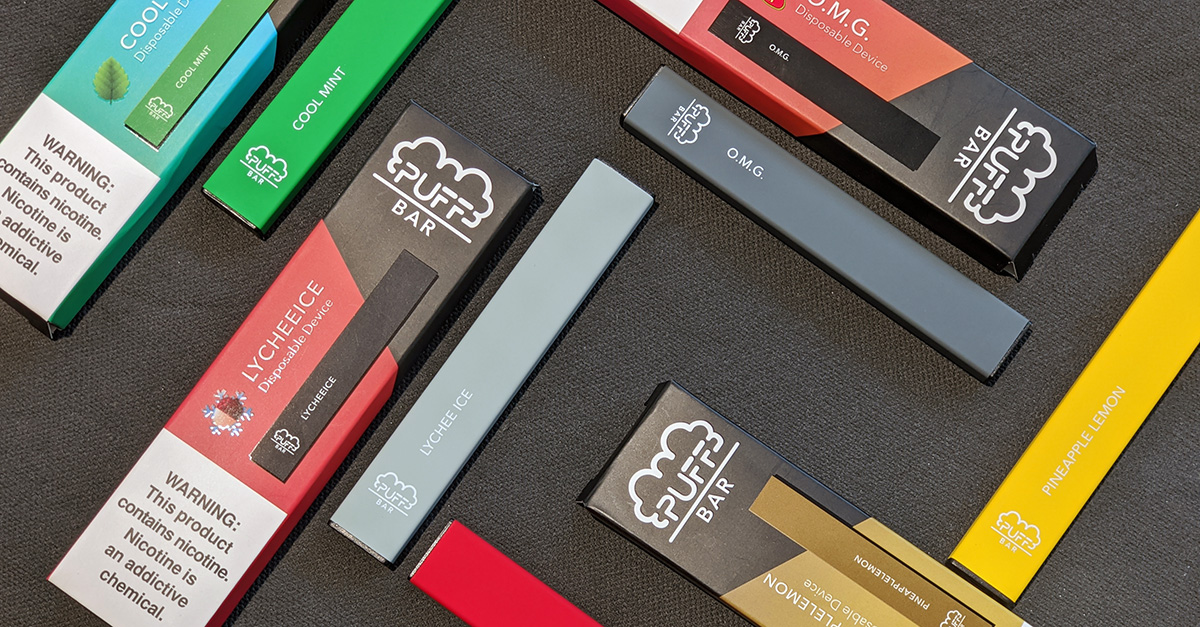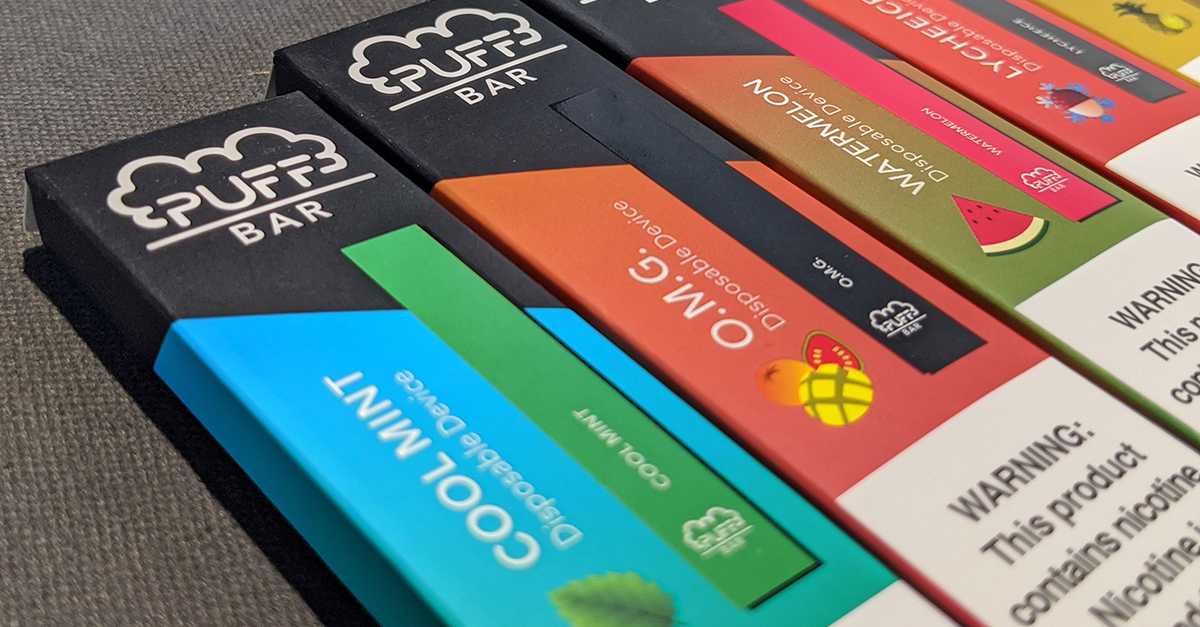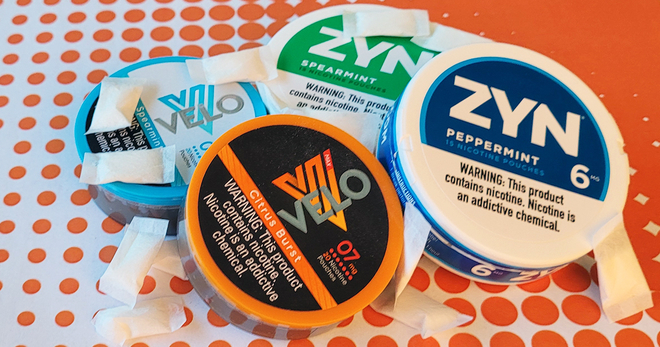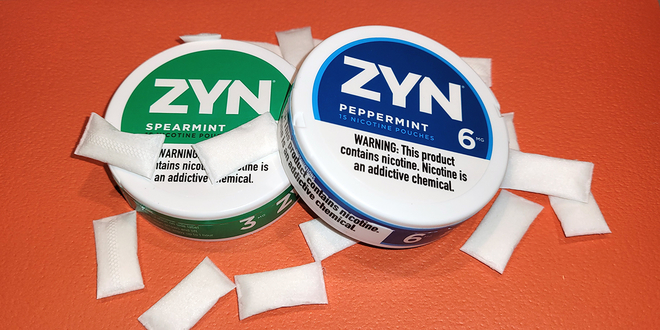Dangerous loopholes: Young e-cigarette users report swapping products as vaping policies change
In the months following the removal of certain flavors of JUUL, the popular brand at the center of the youth e-cigarette epidemic, young users switched to other brands still offering sweet and fruity flavors, especially newer disposable e-cigarettes like Puff Bars.
Many flavored e-cigarettes remain on the market due to loopholes in the new federal policy, which only limits flavors for “closed pod” e-cigarettes, like JUUL, and exempts other types, including disposable and open-system, refillable devices. Data from the first-of-its-kind youth quit-vaping program This is Quitting, a free and anonymous text message-based program from Truth Initiative, show that as regulatory pressures and vaping policies impacted the availability of JUUL, young e-cigarette users switched to other products that remained unaffected and on the market in kid-friendly flavors like sour apple, lemonade and O.M.G (Orange, Mango, Guava).

In the eight months between July 2019 and March 2020, during which JUUL suspended sales of some flavors before the partial federal ban took effect in February, JUUL use declined significantly while use of other products more than doubled. In those months, the number of young people who enrolled in the program and reported using JUUL dropped from 75% to 44% and those who reported using other products increased from 18% to 46%. Among those who reported using other products, disposable e-cigarettes were the most popular device type at 42% and Puff Bars was the most popular disposable brand.
As the youth e-cigarette epidemic continued to intensify leading up to the global COVID-19 pandemic, flavors have remained a key driver of the crisis. Almost all youth who vape — 97% — use flavored e-cigarettes and these products, especially market-leader JUUL, have pushed overall tobacco use to its highest levels in nearly two decades. Without a comprehensive flavored e-cigarette policy, young users can continue switching from one flavored, nicotine-containing product to another in response to policy changes.

Text messaging program designed to help young people quit
Data on product use comes from Truth Initiative’s This is Quitting, a first-of-its-kind program to help young people quit vaping that has enrolled more than 160,000 since it launched in January 2019. A free text messaging program that incorporates messages from other young people like them who have attempted to, or successfully quit, e-cigarettes, This is Quitting sends teens and young adults daily age-appropriate, evidence-based recommendations about quitting. This is Quitting first asks users for their age and product usage so that they receive relevant messages.
USER DATA REVEALS MAJOR SHIFT IN PRODUCT USAGE
Truth Initiative researchers began tracking age and product use among This is Quitting users in July 2019 to evaluate trends in usage and to appropriately tailor user support. Over the eight months between July 2019 and March 2020, JUUL use decreased significantly, while use of other types of e-cigarette devices more than doubled. In July 2019, three-quarters of This is Quitting users (aged 13-24) reported use of JUUL and less than 18% reported using a product other than JUUL, Suorin or Vuse. By March 2020, only 44% of users reported JUUL and 46% reported using an “other” device.
Among younger This is Quitting users, teens aged 13-17, the trends were similar. In July 2019, 66% of teens aged 13-17 reported using JUUL and only 25% of teens reported using a device other than JUUL, Suorin or Vuse. By March 2020, the majority (47%) of teens reported using another e-cigarette and just over 43% of teens reported JUUL use.
USE TRENDS REFLECT CHANGES IN FLAVORED E-CIGARETTE POLICY
On October 17, 2019, in order to protect its reputation and in response to pressure from public health groups and threats at the federal level to ban all flavored e-cigarettes, JUUL announced that it would discontinue sales of its fruit-flavored products. Nearly one month later, on November 7, JUUL took the additional step of suspending sales of its mint-flavored pods, but left its other flavored product, menthol, on the market. In the months immediately following these changes, This is Quitting users began reporting less use of JUUL and more use of other e-cigarette products. By January 2020, JUUL remained the most popular e-cigarette among This is Quitting users, but just barely. More than 40% of users reported using an e-cigarette other than JUUL, Suorin or Vuse in January 2020, compared to less than one-third in October.
By the time that a federal ban on prefilled pod-based flavored e-cigarettes (excluding menthol) went into effect on February 6, 2020, This is Quitting users had largely shifted away from JUUL to other products. This is Quitting data from February 2020 showed a nearly even split of users reporting other e-cigarettes and JUUL.
PUFF BARS AND SMOK MOST POPULAR “OTHER” BRANDS
At the end of January 2020, Truth Initiative further sought to identify which types of e-cigarettes were being used among those who reported using a brand other than JUUL, Suorin or Vuse. This is Quitting asked more than 8,500 users of other products to report the products they had used and received 2,318 responses, among whom 802 were between the ages of 13-17. Overall, 42% reported using disposable e-cigarettes, 26% reported closed pod systems, and 26% reported open/refillable systems. Puff Bars were the most frequently used disposable brand with 42% of disposable users reporting use. Among the 26% who reported being open/refillable users, Smok was the most popular brand, with 62% reporting use.

PRODUCT TYPES AMONG AGE GROUPS
|
Device Type |
Prevalence among “Other” Responders (out of 2,318) |
Teens(13-17) (N=802) |
YA (18-20) (N=1,032) |
Adult (21-24) (N=482) |
|
Disposables |
42% |
41% |
43% |
40% |
|
Closed Pod Systems |
26% |
30% |
25% |
20% |
|
Open/Refillable Systems |
26% |
22% |
27% |
30% |
|
Other Tobacco* |
2% |
1% |
3% |
3% |
|
Marijuana |
2% |
1% |
0.5% |
2% |
|
Nonresponse |
12% |
14% |
10% |
12% |
*any other tobacco product, including cigarettes, cigars, chewing tobacco and nicotine pouches
STRONGER FEDERAL ACTION NEEDED
As these use patterns reflect, companies affected by limited federal policies will be supplanted by those who can take advantage of loopholes to flood the market with the types of products that fulfill the benefits sought by youth — most notably flavors. While This is Quitting data is not nationally representative, it sheds light on e-cigarette use patterns and suggests that, without a stronger, enforceable federal policy restricting all flavored e-cigarette products, users will simply switch from one flavored product to another.






